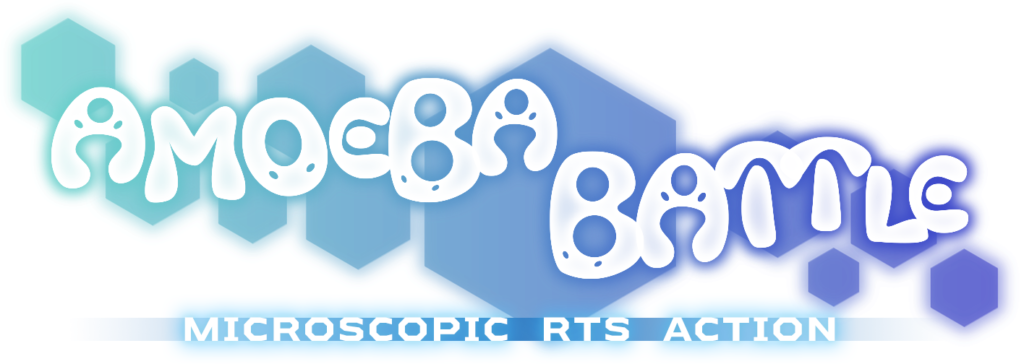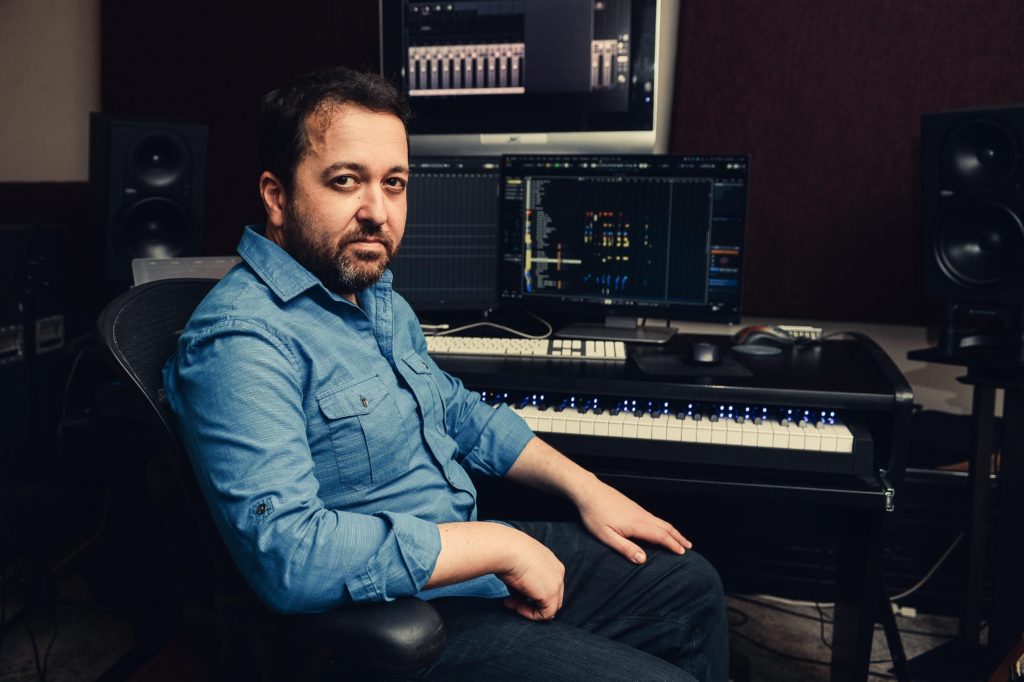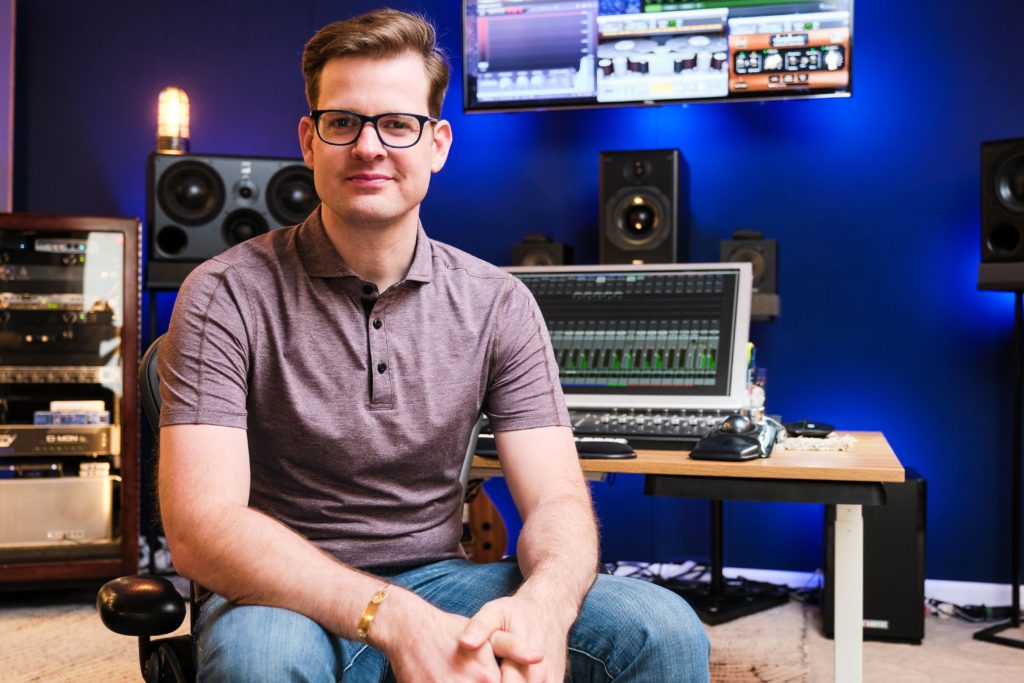
Composers Igor Nemirovsky and Kenny Wood Discuss the Music of Amoeba Battle
What do Intrinsic Games’ Divergent Shift and Grab Games’ Amoeba Battle have in common? Composers Igor Nemirovsky and Kenny Wood. Nemirovsky and Wood were responsible for Divergent’s memorable original score and have recently reteamed for Amoeba Battle, which is now available on PS4, Steam, Nintendo Switch, and Xbox One. While the two games are different styles, Divergent Shift is a 2D puzzle game and Amoeba Battle is an RTS game, they both feature scores that greatly heighten the gameplay experience, helping transport the players into the land they are seeing on the screen. Video game scores are not often dissected, so we decided to speak with Nemirovsky and Wood about the process for creating the Amoeba Battle score. Read the exclusive interview below.
Igor Nemirovsky

-How would you describe your score for the game?
Kenny: The main title and battle mode tracks have an orchestra at their core, but that’s right about where the traditional orchestral usage stops. They’re bright and groovy, featuring synths, and percussion instruments from all around the world such as tabla, marching drumline, taiko, and more. The objective was to make them as charming as the cute little amoebas themselves, but also give a sense of how big and colorful this adventure is going to be.
Igor: I think it’s a rich mix of orchestral texture, rhythmic excitement, and synth motion. I know Kenny’s Battle Mode tracks do an awesome job of moving things at a quick pace, utilizing percussive variety (drumlins, tabla, taiko, and marimbas galore.) For my part I worked on the Campaign mode levels, for which I tried to capture the atmosphere and setting of each world. Light, quick orchestra for the Mushroom Kingdom; flowing synths and sweeping strings for the Primordial Sea, Brass and heavy percussion for the Firelands, and so on. I tried to give each world its own sonic flavor.
-What sort of research did you do before starting work on Amoeba Battle?
Igor: We didn’t really do any research per se. Rather we were given the artwork, concepts, and general direction. I don’t remember there being any temp tracks, for example. We simply wrote, sent the dev team drafts, got back notes, revised, and so on. It was a fluid process that involved seeing the art assets, hearing about the story, and then create a soundscape for that.
Kenny: Since we had a blank slate and new worlds no one has ever seen before, I didn’t feel it would have served the game to research other music. Instead, I drew deep from within, recalling all I had learned from a quarter century of being a musician and used nothing, but my own experience to guide me through the music.
Kenny Wood

-What would you say was your most important job, as a composer, for this game? How do you know you have succeeded at that?
Kenny: I believe our top priority was to keep the players entrenched in the microscopic amoeba world. To me, that meant continually finding ways to spark curiosity and exploration as well as making the battles fun and exciting. It’s unique for everyone, but what points to success for me are the testimonials from players who love the game, whether they mention music or not. That, as well as some great reviews we’ve had recently that DO mention how effective and enjoyable the music is.
Igor: I think ultimately the music serves the purpose of immersing the player in the world the team has created. Kenny and I are story tellers at heart, and music is just another form of world-building. We’re helping create an atmosphere for the player to get lost in, while not distracting from the overall story, action, and game design. I think if players have fun, and feel a sense of connection, the music is doing its job.
-In a previous interview you said you were brought on to the project when there was only hand-drawn images of the amoebas and the worlds they explore. Did the game change a lot from what you saw in those first meeting to the final product?
Igor: Not really. At least conceptually it very much stayed true to its original design. I suspect it was more in the minutia of building game mechanics and player experiences that the game gradually evolved into what it is. But that initial spark and vision felt consistent throughout the creative process.
Kenny: At its core, the game really did not stray much from the initial art concepts, in fact, the amoebas and the worlds never went through any visual changes to my knowledge, which is a credit to Hans Tseng’s original designs. What did change, were small details and gameplay mechanics, which became both more sophisticated and more fluid. That includes some of the sound effects. We expanded on the core sounds we had to give more variety, instead of completely changing them.
-Do you have a favorite track from the game? For the people who have played, where is this track in the game?
Kenny: I love every note we did for this game. My favorite of Igor’s is the Primordial Sea (missions 5-7). It’s a master class in combining synths with orchestra and it’s so easy to get lost in it. In fact, when I play these stages, I don’t hear the music, instead I hear the world come alive with even more vibrant blue color.
If I had to choose one of my own tracks to talk about, it would be the main title, heard right from the start. It doesn’t waste any time kicking things off and I tried to make it feel as if the players are strapping themselves to a rocket ship and preparing for the ride of their lives.
Igor: I loved Kenny’s title track and the Battle Mode music. Among my own track, I have a soft spot for the initial Mushroom Kingdom world, with bright and quickly moving instrumentation. I also enjoyed writing the final boss level track, with its intense layers of brass stabs and string ostinatos juxtaposed against softer woodwinds and percussion.
-How does the score change from the first level to some of the last levels?
Igor: Initially the game begins lightly in the Mushroom Kingdom. The game progresses (as they often do) into more intense and challenging areas. So the music had to follow suit. Additionally, the levels are divided into separate worlds. So I wanted to make sure and give each its own color and flavor as the game moves forward.
-Which level was the most challenging to score and why?
Igor: Probably the Primordial Sea, since I knew I wanted an otherworldly synth texture, but still utilize the orchestra for overall melodic and harmonic textures. And that balance can be tricky.
Kenny: From a technical perspective, the battle tracks were tricky in that I had to craft both of them to work seamlessly with a transitional fanfare that sounds when the battle is reduced to the final 3 combatants. The two battle tracks are in different keys from each other, but there’s only one transition piece! And not only that, but the intensified versions of each battle track that begin after the fanfare are also in different keys than what they came from.
-Now that the game is out and you have probably played it a few times, would you have done anything different score wise if you could go back and modify?
Kenny: Having also worked on the sound effects, there are a couple in there I might like to replace or enhance, and simply for the reason of being a good compliment to the music and the smoothness of the game’s flow, which I don’t want to change at all! We didn’t revise the music that much, but the revisions we did involved very minute details to get certain things to perform perfectly.
Igor: I think in general I’d want to even the score out a bit more in terms of volume and dynamics. And I know that’s something the team did later on. I’m a big fan of the orchestra, which is wonderful at creating very high levels of dynamic range – from the whisper soft of a single flute to the thunder that comes from everyone playing at once. And combining that with new ways of recording percussion, synth textures, and other layers can really lend itself to building worlds of variety and color and nuance. But that doesn’t always translate easily to interactive media, where the music often exists as a support structure for the greater story-telling and player decisions. In that setting consistency and dynamic steadiness is an asset. Particularly in mobile settings. The art we were provided with caused me to sometimes lose myself in the writing process and over-write. That’s definitely something I’ll be keeping an eye open for
-Are you gamers yourselves? If so, what have you been playing recently?
Kenny: I’ve been a die-hard Nintendo fan basically my whole life since the NES. Favorites include the Super Mario and Zelda series (of course). A big reason why is how integrated and rich their music is. Recently, I’ve put the controller down to welcome my baby daughter into the world, but I can’t imagine it’ll be long before she picks it up and we can play together.
Igor: I used to be a much bigger gamer. I grew up on Nintendo and Sega, and later moved to PC gaming. I loved adventure games like the old LucasArts titles, and puzzle platformers like Oddworld or the more recent Limbo and Inside. But my heart was always in the huge, expansive action RPGs like the Elder Scrolls series or the Fallout games. I also have a soft spot for quirky indie gems like Monument Valley or Don’t Starve. Recently though things have been a bit too busy to really lose myself in titles like that, so it’s been mostly mobile games I can play on the go from time to time. (Though last year Civ VI did manage to grab a pretty strong hold on me, being both a history buff and a fan of strategy games; and the music there was also wonderful.)
Amoeba Battle: Microscopic RTS Action is available for PC, Mac, and Linux via Steam.
More information about Igor Nemirovsky is here: http://igornemirovsky.com/
More information about Kenny Wood is here: http://kennywoodmusic.com/
I'm a published author and proud US Army veteran who happens to be a gamer, so I decided to combine the two and love every minute of it! Feel free to contact me with any questions or comments and I'll be sure to get back to you.





More Stories
ReStory Preview for Steam
Firefighting Simulator: Ignite Releases Parker’s Story DLC for PC and Console
The Game Awards 2025: Star Wars: Fate of the Old Republic Revealed by Arcanaut Studios and Casey Hudson, Director of KOTOR and Mass Effect